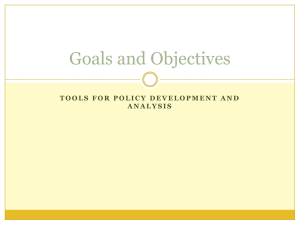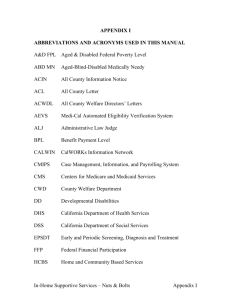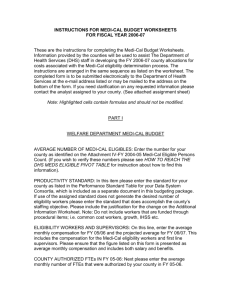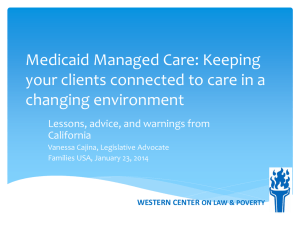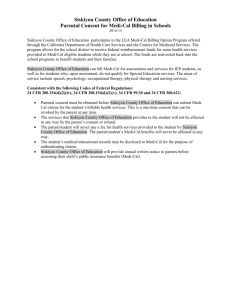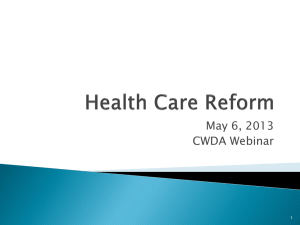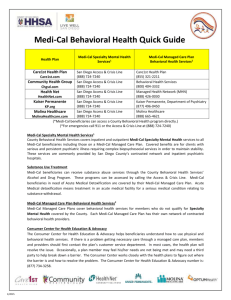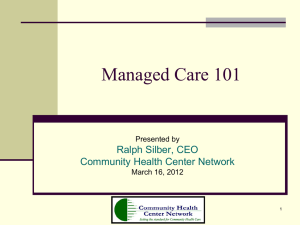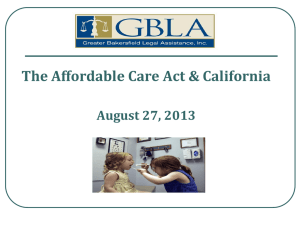Language Access and the Affordable Care Act
advertisement
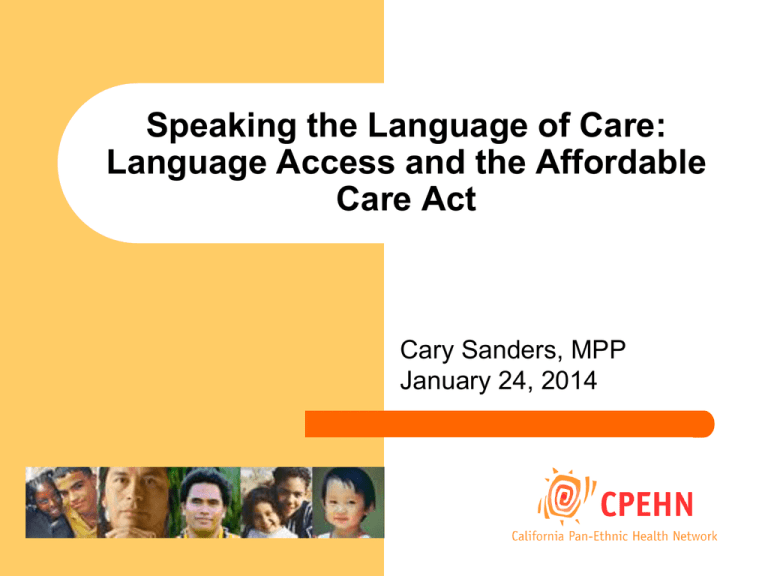
Speaking the Language of Care: Language Access and the Affordable Care Act Cary Sanders, MPP January 24, 2014 CPEHN: Together We’re Stronger Eliminating Health Disparities Coverage does not always equal access Affordability Cultural & Linguistic Access Network Adequacy Timely Access Geographic Access Foundations for Language Access Federal – – – Title VI, Civil Rights Act 1964 Executive Order 13166 and LEP Guidances Office of Minority Health Cultural and Linguistic Appropriate Services (CLAS) Standards California – – – – – State Title VI Look-Alike (Government Code 11135-11139.8) Dymally-Alatorre Act Medi-Cal Managed Care Contract Provisions and Policy Letters Department of Managed Health Care SB 853 (Escutia) Kopp Act 1 Title VI, Civil Rights Act of 1964 Applies to all entities that receive federal funding Prohibits discrimination on the basis of race, color, or national origin (“national origin” includes Limited English Proficient persons) www.lep.gov 2 State Title VI Look-Alike California has a state law that “looks like” Title VI. It is similar to Title VI but is broader, in that: Individuals have the right to sue, in discrimination cases based on race, national origin, ethnic group identification or color. Unlike in Title VI, individuals may sue in “disparate impact” cases. This means that even when an agency didn’t mean to hurt a group of people, it did so in its normal practices. In this case, an individual may sue that agency. Applies to “any program or activity that is conducted, operated or administered by the state or any state agency directly or receives any financial assistance from the state” 3 Medi-Cal Expansion Of the 1.42 million adults newly eligible for Medi-Cal, 67% (950,000) will be people of color A&PI: 7% Other & Multiple Race: 4% African American: 8% White: 33% Latino: 48% CPEHN, Medi-Cal Expansion: What’s at Stake for Communities of Color, 2013 Medi-Cal Expansion Of the 1.42 million adults newly eligible for Medi-Cal, 35% (500,000) will speak English less than very well Spanish Cantonese Vietnamese Korean Tagalog 389,100 34,900 25,200 14,700 10,100 CHIS 2009 and CalSIM 1.8 Medi-Cal Managed Care Applies to Medi-Cal managed care health plans Requirements – – – – – Provide 24 hour free interpretation at all points of service Translate key materials in threshold languages Assess linguistic capabilities of interpreters and bilingual provider Maintain Community Advisory Committee Conduct group Needs Assessment 5 Medi-Cal Managed Care (continued) Written translations – – – – Threshold: 3,000 in service area, 1,000 per ZIP code, or 1,500 per two contiguous ZIP codes List of informing materials Timeline Recommended process for quality assurance Oral interpretation – – – – Comply with Title VI, plans must ensure access to interpreters for all LEP members No unreasonable delays Cannot require or suggest that member provide interpreter Services at no cost to member 6 Covered California Of the 2.7 million eligible for tax credits, 66% (~1.8 million) will be people of color A&PI: 14% NA/AN & Multiple Race: 2% African American: 4% White: 32% Latino: 47% CPEHN, Achieving Equity by Building a Bridge from Eligible to Enrolled, 2013 Covered California Of the 2.7 million eligible for tax credits, 40% (~1.09 million) will speak English less than very well Spanish Mandarin Cantonese Vietnamese Tagalog Korean 721,200 66,600 61,600 50,000 27,600 18,700 CHIS 2009 and CalSIM 1.8 SB 853 Applies to all health plans and insurers Requirements – – – Collect race, ethnicity, and language data Provide access to interpreter at all points of contact Translate vital documents Monitored by the Department of Managed Health Care and the California Department of Insurance 7 SB 853 (continued) Written translations – Thresholds >1,000,000 members percent or 15,000 >300,000 members 6,000 <300,000 members – top two languages and at 0.75 top languages and at 1 percent or 5 percent or 3,000 Provides examples of vital documents and exempts member specific materials Oral interpretation – – No cost to member Outlines interpreter proficiency qualifications 8 Covered California Language Access Services Translate materials into 13 Medi-Cal managed care threshold languages CalHEERS available in Spanish Oral interpretation in all languages Intent to hire bilingual customer service representatives for 13 Medi-Cal managed care threshold languages Dedicated 800 numbers in each language Cultural Competency/Cultural Humility Genuine sensitivity and respect regardless of ethnicity, race, language, culture or national origin Applying understanding of patient’s background, cultural values, and beliefs in health context – Example: The Spirit Catches You and You Fall Down Next Steps: Measuring Quality Care Require Medicaid health plans/QHPs to collect and analyze quality data by race, ethnicity and primary language – Exchanges Federal Guidelines – – Adoption of CAHPS Cultural Competency Measure Set Use of translated CAHPS should be required Clinical measures disaggregated by race, ethnicity and primary language Oversampling in smaller ethnic populations State Requirements (e.g. Evalue8 Module 1.7) Medicaid Require collection and analysis of EQRO data by race, ethnicity and primary language Next Steps: Measuring Quality Care Make quality information more accessible/transparent for consumers – Post quality measures on Medicaid/Exchange website by race, ethnicity and primary language – Provide Provider Directories that sort by: – Doctor and/or Essential Community Provider – Languages spoken – Geographic region Next Steps: Invest in OERU Invest sufficient resources in Outreach, Enrollment, Retention and Utilization (OERU) – – In-Person Assisters/Navigators extremely important for LEP, immigrants and other vulnerable populations! Retention and Utilization often neglected “I worry that people won’t be able to figure out where to go to see a doctor once they get their insurance card.” – Denise Lamb, Black Women for Wellness Contact us at CPEHN (510) 832-1160 info@cpehn.org www.cpehn.org

